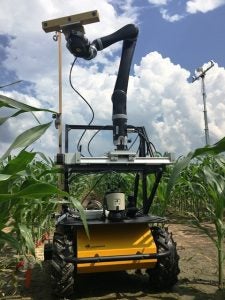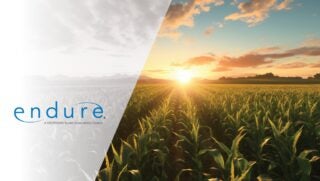With a $20 million NSF grant to study climate change and how corn maintains plant growth during drought conditions, University of Missouri engineers have developed a robot that is changing the way scientists study climate variability, crops, and plant composition.
“I’ve been working with CAFNR assisting them in experiments where we helped to create 3-D images of root growth in the laboratory,” said Gui DeSouza, an associate professor of electrical engineering and computer science at MU in a recent release. “Now, we’re creating robotics to assist in creating images of corn shoot growth out in the field.”
The engineering and plant science research team developed a combination, two-pronged approach using a mobile sensing tower as well as a robot vehicle equipped with three levels of sensors. The tower inspects a 60-foot radius of a given field to identify areas affected by environmental stresses, while the vehicle collects data on individual plants. The sensors have the ability to measure various heights of the corn plant in order to reconstruct the 3-D image.

“Measurements taken from the tower alert us if any of the plants are under stress, such as heat or drought,” DeSouza said. “The tower then signals the mobile robot, which we call the Vinobot, to go to a particular area of the field and perform data collection on the individual plants. The Vinobot has three sets of sensors and a robotic arm to collect temperature, humidity, and light intensity at three different heights on the corn plant. This is called plant phenotyping, which assesses growth, development, yield, and items such as tolerance and resistance to environmental stressors by correlating these to physiology and shape of the plants.”
While the tower covers only a relatively small area, it can easily be moved to cover an entire field. This cost-effective measure means it is less expensive to have more towers, stationed at various points in the field, operating simultaneously.
“The towers not only are inexpensive, they also are available throughout the day and night and can generate more data than any aerial vehicle could,” DeSouza said.


